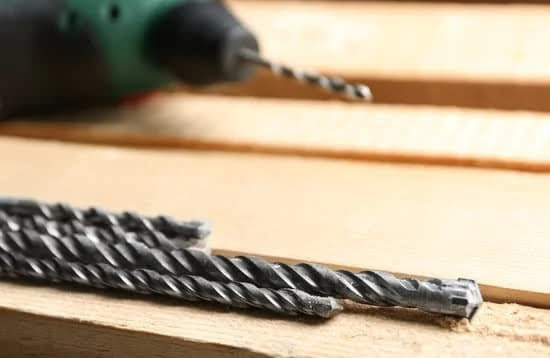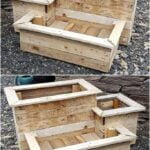Are you wondering “where can I buy wood for woodworking projects“? The quality of the wood you use for your woodworking projects can significantly impact the final outcome. Whether you are a seasoned woodworker or just starting out, selecting the right type of wood is crucial for achieving the desired results. In this article, we will explore the various options for purchasing high-quality wood for your woodworking endeavors.
The type of wood used in woodworking plays a vital role in determining the strength, appearance, and overall durability of the finished project. Different species of wood offer unique characteristics and grain patterns that can enhance the beauty and functionality of your creations. Understanding the types of wood available and their respective uses is essential for any woodworking enthusiast.
When it comes to sourcing wood for woodworking projects, there are several options to consider. Local lumberyards and specialty woodworking stores offer a wide selection of wood species and often provide personalized assistance to help you find the best materials for your specific project. Additionally, online retailers and marketplaces have become increasingly popular for purchasing wood, providing access to a diverse range of options with the convenience of doorstep delivery.
Types of Wood for Woodworking
When considering woodworking projects, the choice of wood is crucial to the final outcome. Different types of wood offer varying levels of durability, appearance, and workability. Some popular choices include pine, cedar, oak, and maple. Pine is a softwood that is easy to work with and affordable, often used for beginners’ projects.
Cedar offers natural resistance to decay and insects, making it ideal for outdoor furniture. Oak is known for its strength and durability, commonly used in furniture construction. Maple is prized for its fine texture and sleek finish, making it a popular choice for cabinetry.
In addition to these popular choices, there are various other wood species available for woodworking projects. Each wood type has unique characteristics that make it suitable for different applications. Understanding the properties of different woods can help woodworkers select the right material for their specific projects.
| Wood Type | Description |
|---|---|
| Pine | A softwood that is easy to work with and affordable. |
| Cedar | Naturally resistant to decay and insects, ideal for outdoor furniture. |
| Oak | Known for its strength and durability; commonly used in furniture construction. |
| Maple |
Where Can I Buy Wood for Woodworking Projects
When it comes to starting a woodworking project, one of the most crucial considerations is where to buy high-quality wood materials. Whether you’re a seasoned woodworker or just getting started with woodworking, the selection of wood can significantly impact the outcome of your project. From local lumberyards to online retailers, there are various options available for purchasing wood for woodworking projects.
Local Lumberyards and Specialty Woodworking Stores
Local lumberyards and specialty woodworking stores are excellent places to find quality wood for your projects. These establishments typically offer a wide variety of wood species, including popular choices such as pine, cedar, oak, and maple.
In addition to a diverse selection, these brick-and-mortar locations provide the opportunity to physically inspect the wood before making a purchase. Many local suppliers also have knowledgeable staff who can provide guidance on selecting the right type of wood for your specific project needs.
Online Retailers and Marketplaces for Purchasing Wood
For those who prefer the convenience of online shopping, there are numerous retailers and marketplaces where you can buy wood for woodworking projects. Online platforms often offer an extensive range of wood species and cuts, providing access to materials that may not be available locally.
From hardwoods to exotic woods, the internet has made it possible for woodworkers to source high-quality materials from around the world. However, it’s essential to research reputable sellers and consider factors like shipping costs when buying wood online.
Tips for Finding the Best Deals and Quality Wood Materials
When searching for where to buy wood for woodworking projects, it’s important to consider factors such as price, quality, and sustainability. Some suppliers may offer bulk discounts or special promotions on certain types of wood.
Additionally, paying attention to details like moisture content and grain patterns can help ensure that you’re investing in top-notch materials for your creations. By exploring different sources and comparing prices, you can find the best deals while obtaining high-quality wood for your woodworking endeavors.
| Wood Supplier | Advantages |
|---|---|
| Local Lumberyard/Specialty Store | Physical inspection; Expert guidance |
| Online Retailers/Marketplaces | Extensive variety; Accessible from anywhere |
Factors to Consider When Buying Wood
When embarking on woodworking projects, the quality of wood used significantly impacts the outcome. Selecting the right type of wood is crucial to achieving the desired results. Factors such as wood grain, moisture content, and sustainability play a key role in determining the suitability of wood for specific projects. It is important to consider these factors when buying wood for woodworking projects.
Wood grain refers to the texture and pattern found in different types of wood. The direction, size, and appearance of wood grain can affect how it responds to cutting, shaping, and finishing processes. Understanding the characteristics of different wood grains can help in making informed decisions about which type of wood is suitable for a particular project.
Additionally, considering the moisture content of wood is essential as it affects its stability and workability. Wood with high moisture content may warp or shrink as it dries, leading to structural issues in the finished project.
Another critical factor to consider when buying wood for woodworking projects is sustainability. It is important to source wood from responsible suppliers who practice sustainable forestry. By choosing environmentally friendly options, woodworkers can contribute to efforts aimed at preserving natural resources and supporting eco-friendly practices in woodworking. Prioritizing sustainable and ethically sourced wood not only benefits the environment but also promotes a positive impact within the woodworking community.
Tips for Inspecting and Selecting Quality Wood
When embarking on a woodworking project, one of the most crucial steps is to ensure that you are working with high-quality wood. The quality of the wood you choose can significantly impact the outcome of your project, affecting its durability, appearance, and overall performance. In this section, we will discuss some essential tips for inspecting and selecting quality wood for your woodworking projects.
Assessing Wood Quality
Before making a purchase, it’s essential to assess the quality of the wood materials you are considering. Look for signs of decay, warping, or insect infestation, as these can all indicate low-quality wood. Additionally, check for any visible knots or imperfections in the wood that may affect its structural integrity. Pay close attention to the wood’s moisture content, as excessive moisture can lead to warping and shrinkage over time.
Identifying Defects
Carefully examine the surface of the wood for any defects such as splits, checks, or cracks. While small imperfections may be manageable depending on your project’s requirements, it’s crucial to avoid selecting wood with significant defects that could compromise its strength or stability. Take the time to run your hands over the surface of the wood to feel for any rough spots or irregularities that may affect its usability.
Grading Systems
Many types of wood come with grading systems that classify their quality based on factors such as appearance and structural soundness. Understanding these grading systems can help you make informed decisions when purchasing wood for your projects. Look for reputable suppliers who offer clear information about the grading system used for their wood products and provide detailed descriptions of each grade’s characteristics.
By following these tips for inspecting and selecting quality wood, you can ensure that your woodworking projects are built to last. Prioritizing the selection of high-quality wood materials will not only enhance the aesthetic appeal of your creations but also contribute to their longevity and performance.
Whether You Prefer to Shop at Local Lumberyards or Browse Online Retailers,
you must prioritize quality and sustainability when purchasing wood for woodworking projects.
Cost Comparison
When considering where to buy wood for woodworking projects, one important factor to take into account is the cost comparison between local and online wood suppliers. Each option has its own advantages and it’s essential to weigh the factors that are most important to you as a woodworker.
Local Wood Suppliers
Local lumberyards and specialty woodworking stores offer the advantage of being able to physically inspect the wood before making a purchase. This hands-on approach allows you to select the perfect pieces for your project, ensuring that they meet your specific requirements in terms of quality, grain, and appearance. Additionally, purchasing from local suppliers often means quicker access to materials without having to wait for shipping.
Online Wood Suppliers
On the other hand, online retailers and marketplaces offer a wide variety of wood species and cuts that may not be readily available at local stores. This vast selection provides woodworking enthusiasts with the opportunity to explore different options and find unique pieces for their projects. However, it’s important to consider additional costs such as shipping fees and potential delays in delivery when opting for online wood suppliers.
Ultimately, when comparing the cost of purchasing wood from local versus online suppliers, it’s crucial to consider factors such as shipping expenses, accessibility, and the specific needs of your woodworking project. By carefully evaluating these factors, you can make an informed decision about where to buy wood for your next woodworking endeavor.
Sustainable and Environmentally Friendly Wood Sources
When it comes to woodworking projects, the type and quality of wood used can significantly impact the overall outcome. Choosing sustainable and environmentally friendly wood sources is not only important for the environment but also for the longevity and integrity of your project. Here are some options for finding sustainable wood for your woodworking projects:
- Sustainable Forestry Practices: Look for wood suppliers that prioritize sustainable forestry practices. This means that the wood is sourced from forests that are responsibly managed, with a focus on preserving biodiversity, protecting water quality, and supporting the livelihoods of local communities.
- Reclaimed Wood: Consider using reclaimed wood for your woodworking projects. This type of wood is salvaged from old buildings, barns, or other structures and repurposed for new projects. Using reclaimed wood not only reduces the demand for new timber but also adds a unique character to your creations.
- Certified Wood Products: Look for wood products that have been certified by reputable organizations such as the Forest Stewardship Council (FSC) or the Sustainable Forestry Initiative (SFI). These certifications ensure that the wood comes from responsibly managed forests and meets strict environmental and social standards.
By prioritizing sustainable and environmentally friendly wood sources, you can not only create beautiful and long-lasting woodworking projects but also contribute to the conservation of our planet’s natural resources. When asking yourself “where can I buy wood for woodworking projects“, consider these options to make a positive impact with your woodworking endeavors.
Local Woodworking Resources and Workshops
For those who are passionate about woodworking, accessing local woodworking resources and workshops can be incredibly beneficial. These community-based organizations provide a supportive environment for woodworkers of all skill levels, offering access to a range of resources and expertise. Whether you are looking to enhance your skills, find inspiration, or connect with like-minded individuals, local woodworking resources and workshops can be invaluable.
Here are a few examples of the types of local woodworking resources and workshops that you may find in your area:
- Woodworking Clubs: Many communities have established woodworking clubs where members can gather to share their knowledge, work on projects, and learn from one another. These clubs often organize regular meetings, events, and even woodworking competitions.
- Community Centers: Some community centers offer woodworking classes and workshop spaces for residents to use. These facilities may provide access to tools, equipment, and instruction for individuals who are interested in pursuing woodworking as a hobby or profession.
- Specialty Workshops: In some areas, there are businesses or organizations that specialize in offering woodworking workshops and training programs. These may cover specific skills or techniques such as joinery, carving, turning, or furniture making.
By engaging with these local woodworking resources and workshops, woodworkers can gain access to valuable support networks and educational opportunities. Additionally, these environments often serve as a source for obtaining high-quality wood materials for projects.
Many times instructors would recommend good places like lumberyards or specialty stores if students asked them “where can I buy wood for woodworking projects“. This type of networking provides an excellent way for woodworkers to connect with reliable sources for purchasing wood and other essential materials for their projects.
Conclusion
In conclusion, the quality of wood used in woodworking projects plays a crucial role in determining the outcome of the project. Whether it’s for constructing furniture, crafting decorations, or creating intricate designs, selecting the right type of wood is essential for achieving the desired results. With the wide variety of wood species available, such as pine, cedar, oak, and maple, it’s important to understand their characteristics and uses to make an informed decision.
When asking “where can I buy wood for woodworking projects,” there are several options to consider. Local lumberyards and specialty woodworking stores offer a hands-on experience where you can inspect the wood materials before making a purchase. Online retailers and marketplaces also provide convenience and access to a wider selection of wood, but it’s important to factor in shipping and transportation costs when comparing prices with local suppliers.
In addition to considering factors such as wood grain, moisture content, and sustainability when purchasing wood materials, it’s also important to inspect the quality of the wood before making a decision. Identifying defects, knots, and other imperfections can significantly impact the outcome of your woodworking project. By prioritizing quality and sustainability when buying wood for woodworking projects, you can ensure that your creations are not only visually appealing but also environmentally friendly.
Frequently Asked Questions
How Do You Get Good Wood for Woodworking?
Getting good wood for woodworking requires a few key steps. First, consider the type of project you’re working on and what qualities you need in the wood, such as stability, durability, or grain pattern. Then, visit local lumberyards or wood suppliers to select high-quality, well-dried lumber.
Look for straight, smooth boards with minimal knots and warping. Finally, consider purchasing wood from sustainable sources to support responsible forestry practices.
How Do You Get Wood for a Project?
Getting wood for a project involves assessing the specific requirements of the project and then sourcing the appropriate type of wood. Local lumberyards, woodworking stores, or online suppliers are common places to find a variety of wood species in different sizes and grades.
It’s important to carefully inspect and select wood that meets the needs of your project in terms of appearance, stability, strength, and workability.
What Kind of Wood Should I Use for Woodworking?
The kind of wood you should use for woodworking depends on the specific requirements of your project and the characteristics needed in the wood. For example, hardwoods like oak or maple are known for their strength and durability, making them suitable for furniture-making.
Softwoods such as pine or cedar are lighter and more affordable options often used in construction projects. Consider factors such as color, grain pattern, hardness, stability, and workability when choosing the right type of wood for your woodworking project.

Hi everyone! I’m a woodworker and blogger, and this is my woodworking blog. In my blog, I share tips and tricks for woodworkers of all skill levels, as well as project ideas that you can try yourself.





